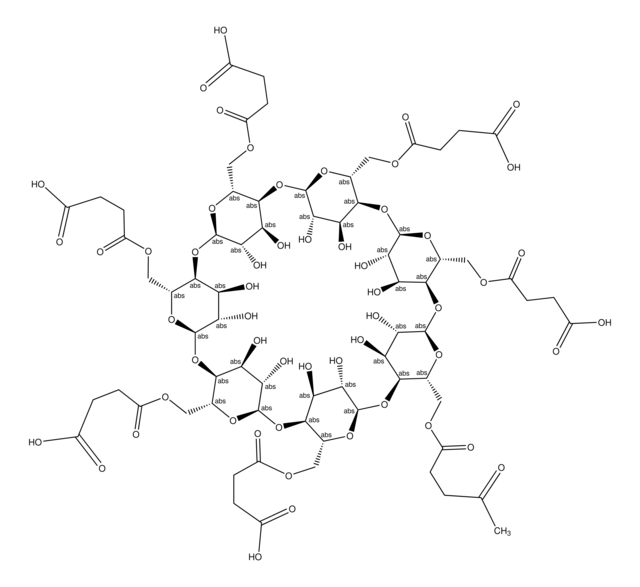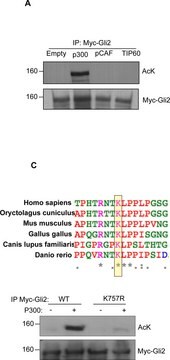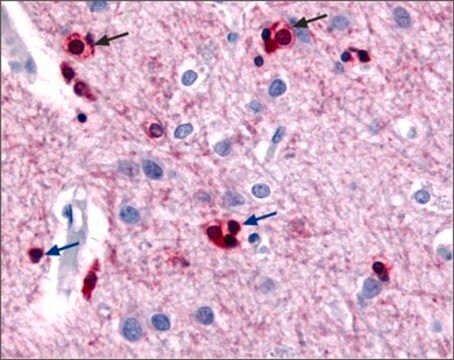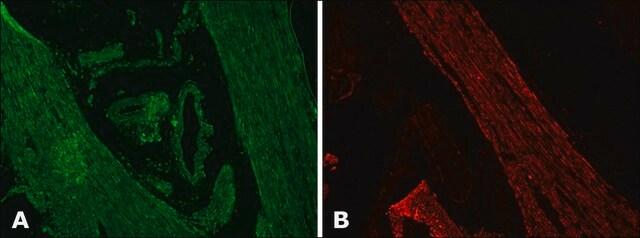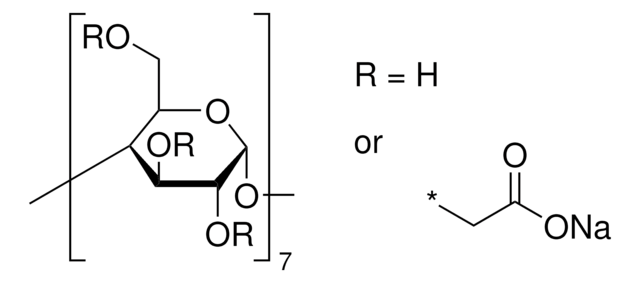05-667
Anti-phospho-CREB (Ser133) Antibody, clone 10E9
clone 10E9, Upstate®, from mouse
Sinónimos:
active transcription factor CREB, cAMP responsive element binding protein 1, cAMP-response element-binding protein-1, transactivator protein
About This Item
Productos recomendados
origen biológico
mouse
Nivel de calidad
forma del anticuerpo
purified antibody
tipo de anticuerpo
primary antibodies
clon
10E9, monoclonal
reactividad de especies
canine, rat, mouse, human
fabricante / nombre comercial
Upstate®
técnicas
ELISA: suitable
immunohistochemistry: suitable
western blot: suitable
isotipo
IgG1κ
Nº de acceso NCBI
Nº de acceso UniProt
Condiciones de envío
dry ice
modificación del objetivo postraduccional
phosphorylation (pSer133)
Información sobre el gen
human ... CREB1(1385)
Descripción general
Especificidad
Inmunógeno
Aplicación
Epigenetics & Nuclear Function
Transcription Factors
Calidad
Western Blot Analysis: 0.5-2 μg/mL of this antibody detected phosphorylated CREB in whole cell lysates from HepG2 and PC12 cells treated with forskolin.
Descripción de destino
Forma física
Almacenamiento y estabilidad
Rehydrated: Stable for 3 months at 2-8ºC.
Aliquot solution to store frozen and avoid repeated freeze thaw cycles.
Nota de análisis
Forskolin-treated PC12 cell lysate
Información legal
Cláusula de descargo de responsabilidad
¿No encuentra el producto adecuado?
Pruebe nuestro Herramienta de selección de productos.
Opcional
Palabra de señalización
Danger
Frases de peligro
Consejos de prudencia
Clasificaciones de peligro
Acute Tox. 3 Dermal - Acute Tox. 4 Inhalation - Acute Tox. 4 Oral - Aquatic Chronic 3
Código de clase de almacenamiento
6.1C - Combustible acute toxic Cat.3 / toxic compounds or compounds which causing chronic effects
Clase de riesgo para el agua (WGK)
WGK 1
Certificados de análisis (COA)
Busque Certificados de análisis (COA) introduciendo el número de lote del producto. Los números de lote se encuentran en la etiqueta del producto después de las palabras «Lot» o «Batch»
¿Ya tiene este producto?
Encuentre la documentación para los productos que ha comprado recientemente en la Biblioteca de documentos.
Nuestro equipo de científicos tiene experiencia en todas las áreas de investigación: Ciencias de la vida, Ciencia de los materiales, Síntesis química, Cromatografía, Analítica y muchas otras.
Póngase en contacto con el Servicio técnico

